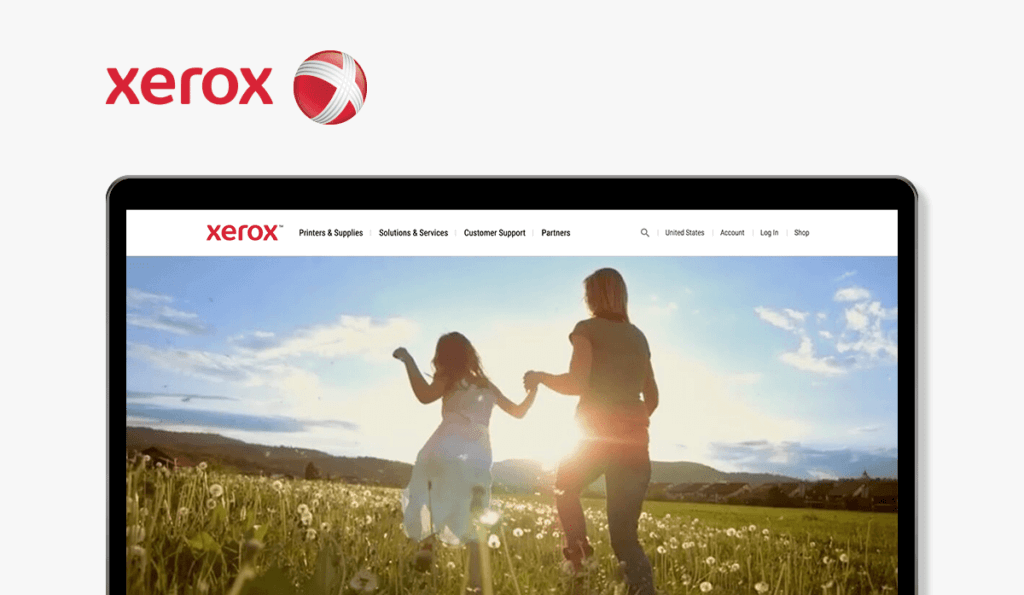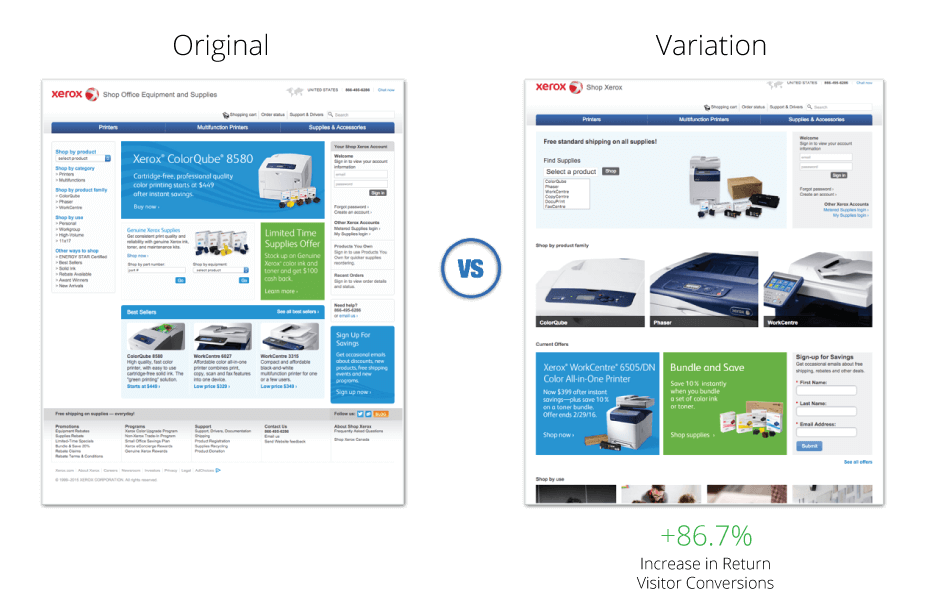
How Xerox Leveraged User Insights To Inform A Redesigned Shopping Experience
See how Xerox established a robust experimentation practice with The Good’s Digital Experience Optimization Program™.

The Overview
Xerox is an iconic company, known for its rich history and deep experience with document technology products and services. Their digital printers and other products are used by businesses worldwide.
The Challenge
Xerox approached The Good, hoping to improve the user experience on their B2B online printer and supplies ecommerce site (shop.xerox.com). Visitors were getting stuck on the path to purchase and abandoning their carts resulting in low conversion rates and a poor ROI on traffic generation spend for the company.
The Process
After a few conversations about the challenges Xerox was experiencing and establishing a good mutual fit, The Good recommended the Digital Experience Optimization Program™.
The process began with the Digital Experience Optimization Audit™. Methods like heat mapping, session recordings, and user testing laid the research foundation for the optimization program and our analysis uncovered usability issues across Xerox’s website.
Specifically, we identified a number of areas of opportunity including:
- Visitors getting stuck in navigation and on-site searches because of uncertainty about which Xerox printer is the best for their specific needs
- Poor mobile experience causing user frustration
- Visitors experiencing disjointed visual design and branding between xerox.com and shop.xerox.com, causing confusion and abandonment
- Drop-off caused by too many extraneous steps and fields on the path to purchase
From there, The Good developed a strategic roadmap of website improvements that would test and optimize the areas with the biggest challenges and highest potential impact. The roadmap served as the starting point for a recurring monthly engagement on the Digital Experience Optimization Program™ that included research, strategy, A/B and multivariate testing.
The Solution
Our hypothesis was that streamlining the path to purchase and expediting the checkout process would provide the biggest impact on website performance and goals.
This involved defining the shop.xerox.com customer journey. To do that, we set up a visitor categorization system. We identified three types of prospects: existing customers, new printer shoppers, and new ink/supplies shoppers.
To prove these hypotheses, we designed a number of experiments, including:
- Removing extra fields to simplify checkout
- Adjusting the content strategy of key pages along the path to purchase
- Revising or redesigning visual elements to improve clarity on crucial pages
The results from the initial on-site experiments led us to run additional tests on the homepage, product detail pages, and other primary pages.
On the homepage, we tested a broad redesign. Our hypothesis was centered around improving the experience for returning visitors – since they displayed a 60% higher likelihood of purchasing than first-time visitors. The redesigned page resulted in an 86.7% growth in conversions for returning visitors.

Next, on the product detail pages, we hypothesized that reducing distracting content would give users a smoother path to purchase. We tested a cleaner page presentation and clarified the process for comparing pricing against local and online retailers. That test showed an 18.9% growth in revenue from add-to-cart conversions.
We also tested changes to the call to action. The test increased engagement by 15.2% and drove a 3.4% increase in those adding to cart.
Because of our rigorous testing protocol, it became clear that we should prioritize site visual design and user experience (UX) updates.
That would also allow Xerox to re-platform to a more flexible ecommerce experience, incorporate a new mobile-friendly responsive design, and utilize the testing insights from the homepage, product pages, and other pages to inform a data-validated redesign of the user experience.
The Results
As a result of The Good’s strategic advisory services, Xerox has incorporated data-driven insights to improve user experience and turn more browsers into buyers.
How They Got There
The results we unlocked for Xerox are the direct result of the Digital Experience Optimization Program™.